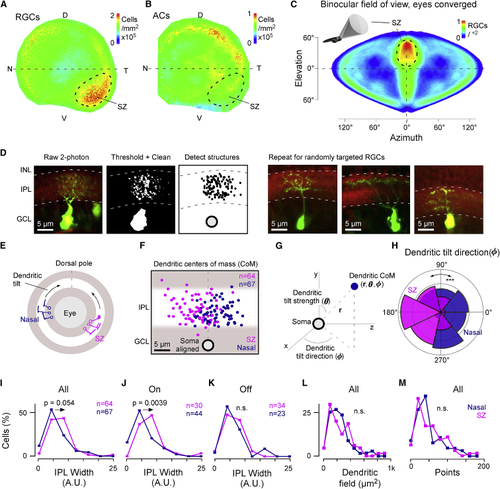Figure 7
- ID
- ZDB-FIG-200817-41
- Publication
- Zhou et al., 2020 - Zebrafish Retinal Ganglion Cells Asymmetrically Encode Spectral and Temporal Information across Visual Space
- Other Figures
- All Figure Page
- Back to All Figure Page
|
Elevated RGC Density and Relative Overrepresentation of Diffuse ON-RGCs in the SZ (A and B) Density maps of all RGCs (A) and ACs (B) computed from cell counts in (C) Projections of RGC densities from (A) into binocular visual space during hunting (eyes converged), as illustrated in the inset. Note that the two SZs neatly superimpose (see also [ (D) Illustration of photoconversion and pre-processing pipeline for digitizing single RGC morphologies. Left: following photoconversion, cells were imaged as stacks under two-photon (green) in the background of BODIPY staining to demarcate the IPL borders (red). Cells were then thresholded and manually “cleaned” where required prior to automatic detection of image structures and alignment relative to the IPL borders. The resultant “point clouds” were used to determine summary statistics of each cell (e.g., E–M) and were also projected into density maps for visualization ( (E–M) A total of n = 64 and n = 67 randomly targeted RGCs from the SZ and nasal retina, respectively, were processed for further analysis, which included computation of their dendritic tilt (E–H), stratification widths within the IPL (I–K), |

